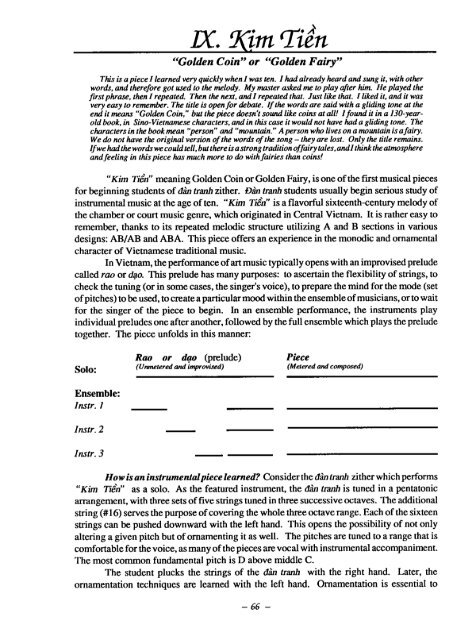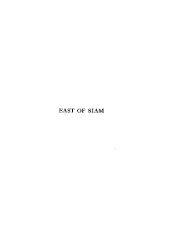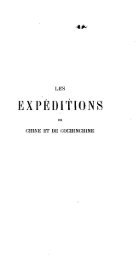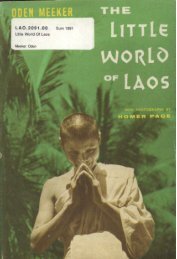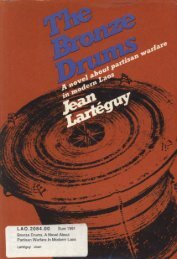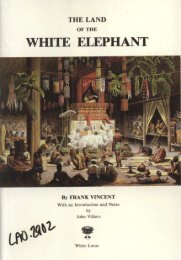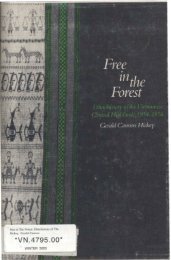and Temple Yards
iutnam From Rice Paddies and Temple Yards - Refugee Educators ...
iutnam From Rice Paddies and Temple Yards - Refugee Educators ...
- No tags were found...
You also want an ePaper? Increase the reach of your titles
YUMPU automatically turns print PDFs into web optimized ePapers that Google loves.
"Golden Coin" or "Golden Fairy"<br />
This is a piece I learned very quickly when I was ten. I had already heard <strong>and</strong> sung it, with other<br />
wordr, <strong>and</strong> therefore got used to the melody. My master asked me to play a t him. He played the<br />
first phrase, then I repeated. Then the next, <strong>and</strong> I repeated that. Jut like that. I liked it, <strong>and</strong> it was<br />
very easy to remember. The title is open for debate. If the words are said with a gliding tone at the<br />
end it means "Golden Coin." but the piece doesn't sound like coins at all! I found it in a 130-yearold<br />
book, in Sino-Vietnamese characters, <strong>and</strong> in this case it would not have had a gliding tone. The<br />
characters in the book mean "person" <strong>and</strong> "mountain." A person who lives on a mountain is a fairy.<br />
We do not have the original version of the worh of the song - they are lost. Only the title remains.<br />
Ifwe had the words we could tell, but there is a strong tradition offairy tales, <strong>and</strong> I think the atmosphere<br />
<strong>and</strong> feeling in this piece has much more to do with fairies than coins!<br />
"Kim ~i& meaning Golden Coin or Golden Fairy, is one of the first musical pieces<br />
for beginning students of din tmh zither. D;in lranh students usually begin serious study of<br />
instrumental music at the age of ten. "Kim ~iin" is a flavorful sixteenth-century melody of<br />
the chamber or court music genre, which originated in Central Vietnam. It is rather easy to<br />
remember, thanks to its repeated melodic structure utilizing A <strong>and</strong> B sections in various<br />
designs: ABIAB <strong>and</strong> ABA. This piece offers an experience in the monodic <strong>and</strong> ornamental<br />
character of Vietnamese traditional music.<br />
In Vietnam, the performance of art music typically opens with an improvised prelude<br />
called rao or dao. This prelude has many purposes: to ascertain the flexibility of strings, to<br />
check the tuning (or in some cases, the singer's voice), to prepare the mind for the mode (set<br />
of pitches) to be used, to create a particular mood within the ensemble of musicians, or to wait<br />
for the singer of the piece to begin. In an ensemble perfomance, the instruments play<br />
individual preludes one after another, followed by the full ensemble which plays the prelude<br />
together. The piece unfolds in this manner:<br />
Solo:<br />
Rao or dqo (prelude)<br />
(Uwne~ered <strong>and</strong> improvised)<br />
Piece<br />
(Melered nnd composed)<br />
Ensemble:<br />
Instr. I<br />
Instr. 2 -<br />
Instr. 3 -<br />
How is an instrumentalpiece learned? Consider the din tranh zither which performs<br />
"Kim ~i6n" as a solo. As the featured instrument, the d2n tranh is tuned in a pentatonic<br />
arrangement, with three sets of five strings tuned in three successive octaves. The additional<br />
string (#16) serves the purpose of covering the whole three octave range. Each of the sixteen<br />
strings can be pushed downward with the left h<strong>and</strong>. This opens the possibility of not only<br />
altering a given pitch but of ornamenting it as well. The pitches are tuned to a range that is<br />
comfortable for the voice, as many of the pieces are vocal with instrumental accompaniment.<br />
The most common fundamental pitch is D above middle C.<br />
The student plucks the strings of the dh tranh with the right h<strong>and</strong>. Later, the<br />
ornamentation techniques are learned with the left h<strong>and</strong>. Ornamentation is essential to


